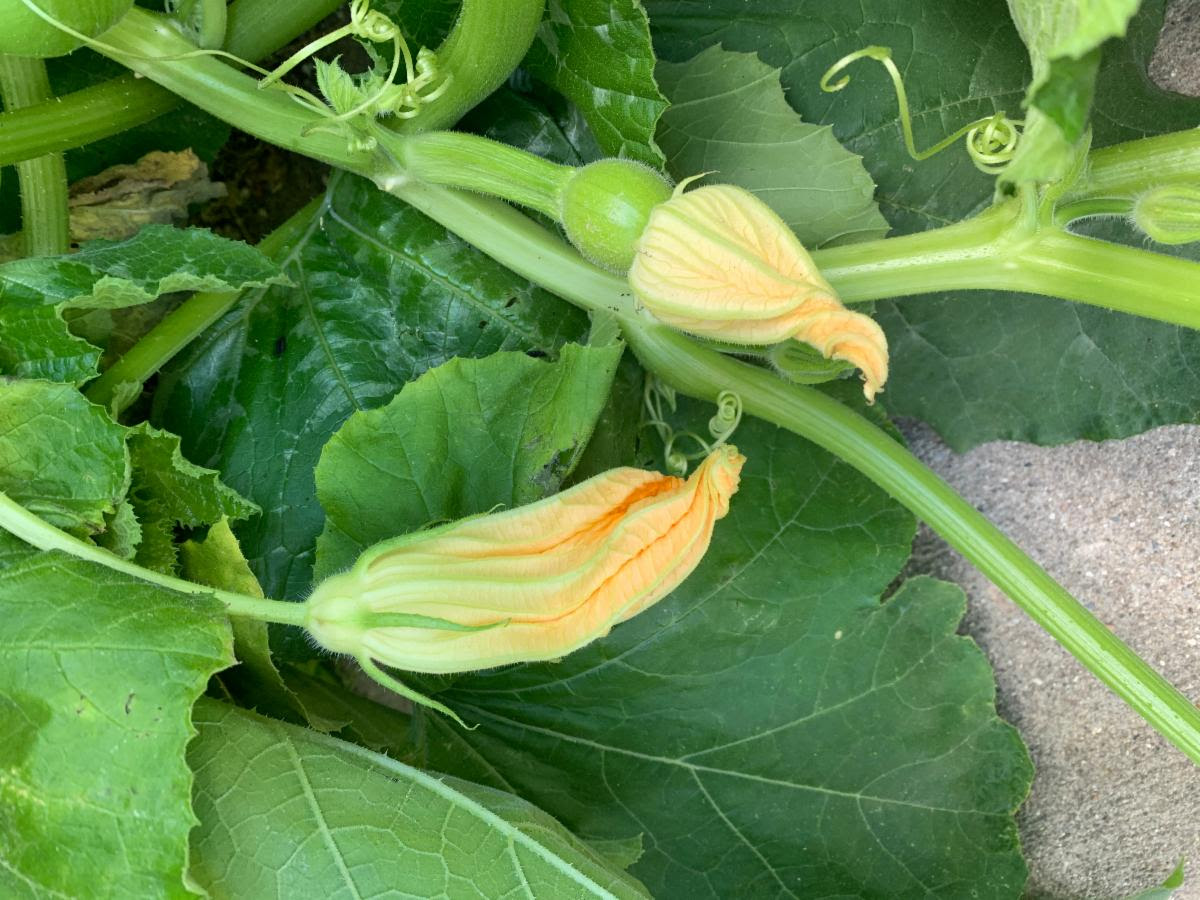Sustainable Agriculture Team Update July 2020
Sustainable Agriculture Team Update July 2020

This year our chard and beets have had more insect damage, holes, than previously. We are dealing with a new pest, the spinach flea beetle, Disonycha xanthomelas. While we have had some small amounts of damage from this pest in the past, it wasn't enough to merit investigating or investing in control measures.
This year the damage is many times what it was in the past. We are finding multiple larvae on every plant, which indicates there are many adults present as well. The adults are a small black beetle with a red head less than a quarter inch in length. Like their name suggests, this family of beetles are very strong jumpers, and will jump up to a foot in response to being threatened.
We have some theories about why the damage is so bad this year, and why it came about so suddenly. We think that the beetles were feeding on weeds somewhere in the area and their food supply was disturbed, either due to construction or other causes. This caused them to migrate to our plot, leading to sudden and large amounts of damage.
While the damage is unsightly, it won't cause you any harm! Greens that are a bit rough can be cooked for better presentation.
Farming is full of these kinds of unexpected challenges. Our next step is to decide what the best way to control this new pest is for our future chard and beet crops.

A squash flower being pollinated by a bee called Peponapis pruinosa, commonly known as a Squash Bee. These bees specialize in pollinating flowers in the cucurbit family: winter and summer squash, melons, cucumber, and pumpkins. While lots of insects pollinate squash including honey bees, beetles and flies, the Squash Bee is a dedicated pollinator of cucurbits and is much more effective then other insects.
Cucurbits are monoecious meaning that each plant produces both male and female flowers. Both flowers produce nectar to attract the bees, but the male flower produces pollen and the female flower receives it. The bees will visit many flowers in search of nectar while also collecting pollen from the male flowers on their bodies and transferring it to the female flowers. To fully fertilize the female flower, it needs to be visited by a pollen-laden bee as many as twelve times!

Depending on the conditions, incomplete pollination can be fairly common and noticeable in the squash. Some of you might have noticed a taper on the ends of your squash (picture example below). This is a visible sign of incomplete pollination. While completely edible the plant couldn't finish the squash's development because of the lack of pollen. This occurred because we pulled our protective row covers off our summer squash a bit too late resulting in some of the squash starting to develop despite squash bees being unable to access the flowers. Now that the row cover is off and the bees have full access to the flowers we shouldn't see much more of that!

Tune in next month for more on what's happening in the fields!



 Print
Print Email
Email




